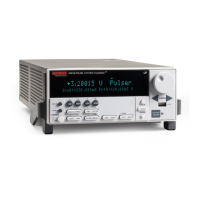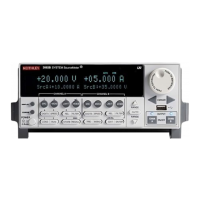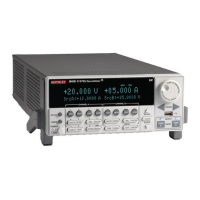Interface trap capacitance CIT and density DIT
The density of interface traps (D
it
) is a function of the silicon orientation and the fabrication process. It
is determined by performing simultaneous high frequency and quasistatic C-V sweeps. The
measurements are extracted mostly from the depletion and inversion regions near mid-band.
Interface trap density is calculated from C
IT
as shown below (from Nicollian and Brews 332, see
References (on page 6-64)).
Where:
• C
IT
= interface trap capacitance (F)
• D
IT
= interface trap density (cm
-2
eV
-1
)
• C
Q
= quasistatic capacitance (F)
• C
H
= high-frequency capacitance (F)
• C
OX
= oxide capacitance (F)
• A = gate area (cm
2
)
• q = electron charge (1.60219 × 10
-19
coulombs)
Mobile ion charge concentration
Mobile ion contaminants in an oxide layer can cause problems in the manufacture and performance
of integrated circuits. To measure the concentration of mobile ions in the oxide layer, you can use the
triangular voltage sweep (STVS) method, developed by Keithley Instruments to monitor mobile ion
charge in MOS structures.
You can also use the flatband voltage shift or temperature-bias stress method to measure oxide
charge density.
Mobile ion monitoring with triangular voltage sweep (STVS) method
STVS is a technique developed by Keithley Instruments to monitor mobile ion charge in MOS
structures. Compared with other mobile ion monitoring techniques, such as the BTS and flatband shift
methods, it offers faster and more accurate measurement. STVS measures ionic current instead of
voltage shift. It has the ability to identify species, and it eliminates the need for temperature cycling of
the device under test (DUT). The STVS method has proven to be effective in monitoring mobile ion
charge in dielectrics to levels down to 10
9
cm
-3
.
